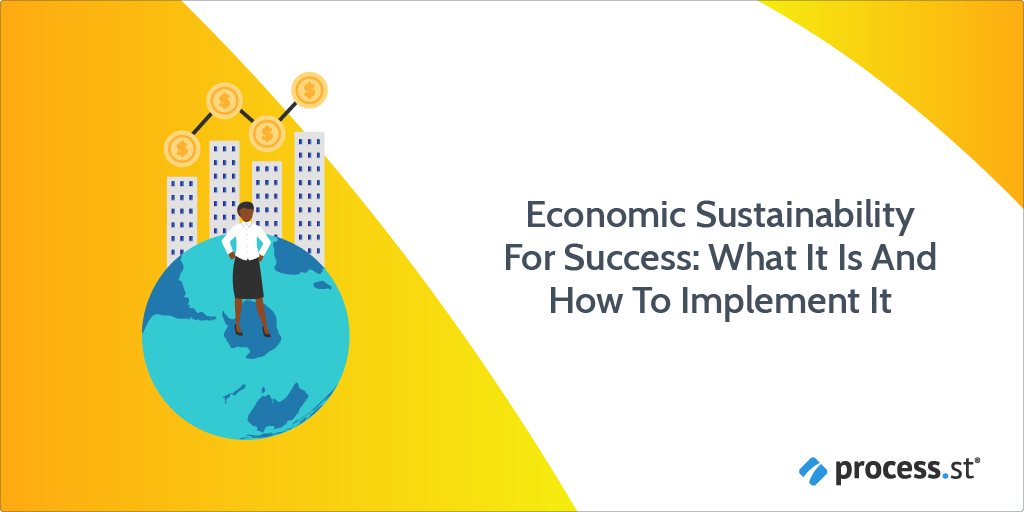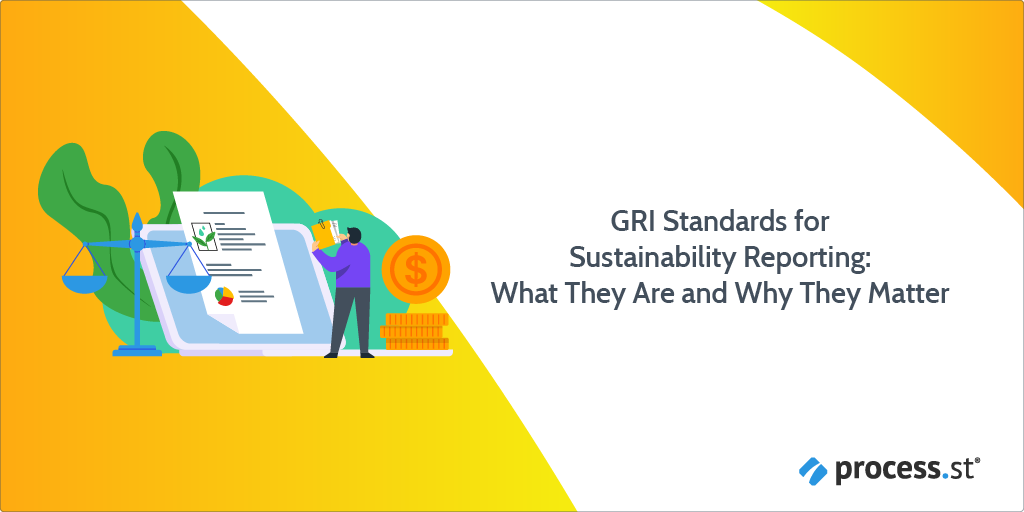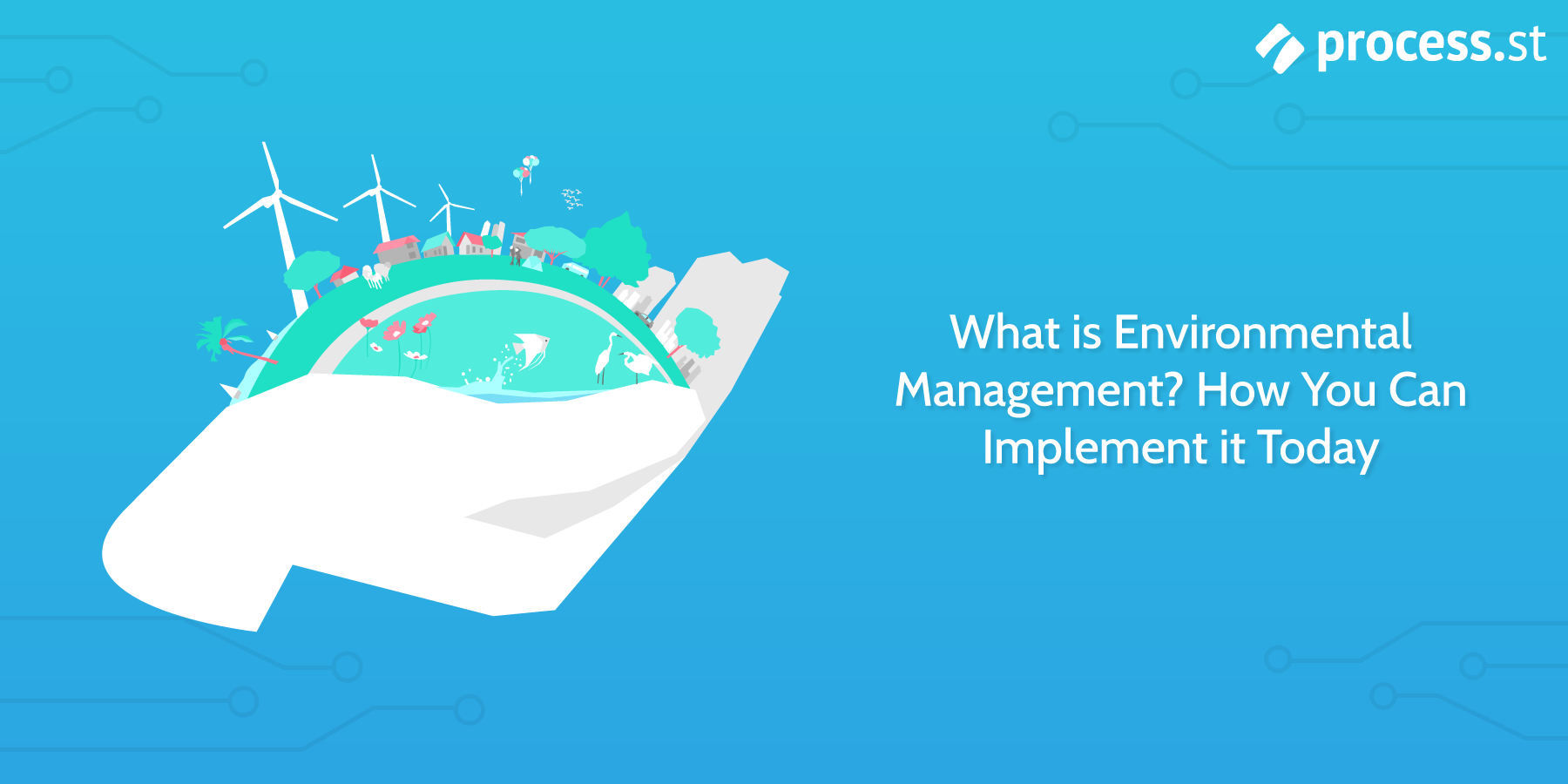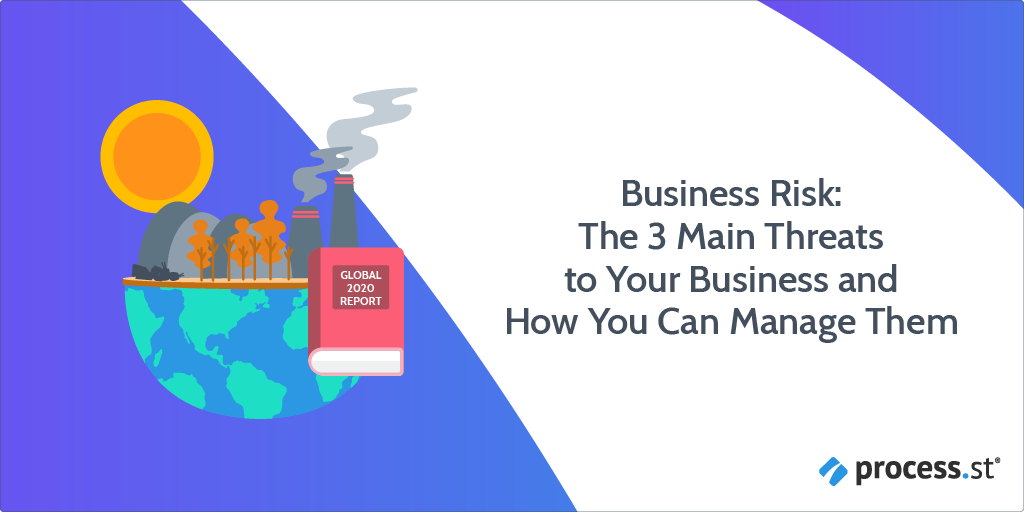
“Global stock markets post biggest falls since the 2008 financial crisis.” – The Guardian, 9th of March 2020
Business risk can come out of no where at any time.
It was a Tuesday morning and my phone buzzed me out of my groggy, lethargic state, flashing open the above notification. The Coronavirus had hit businesses and our economy hard, potentially costing 2.7 trillion globally.
A viral risk, that went viral. Was something like this not foreseeable?
In this Process Street article, we turn our attention to the concept of business risk. As we write this article, the corona crisis is unfolding. We were warned about the risk of a virus outbreak but it appears we weren’t as prepared for it as we could have been.
But viruses are not the only risk we face. The 2020 Global Risk Report from the World Economic Forum (WEF) highlights a host of other risks, which we’ll turn our attention to in this article.
To get started, click on the relevant subheaders below to spring to that section. Alternatively, scroll down to read all we have to say regarding the concept of business risk.
- Confront business risk with a risk management process
- Business risk: What is it and why risk items need to be identified
- Business risks: Global business risks from the World Economic Forum
- What is a risk management process and how do we use it?
- Incorporating the Global 2020 Risk Report results within your risk management process
- Risk item 1: Extreme weather, cause, and economic effect
- Risk item 2: Climate action failures, cause, and economic effect
- Risk item 3: Biodiversity loss, cause, and economic effect
- Risk assessment: Why sustainability is part of a good risk assessment
- Sustainability risk management: How you can document your processes with Process Street
Belts and braces on, let’s jump to it!
Continue Reading






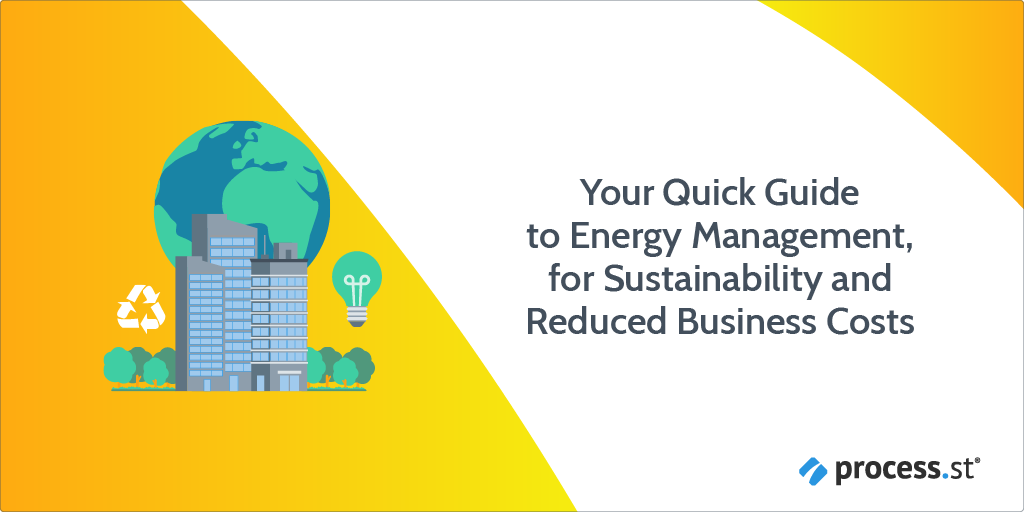
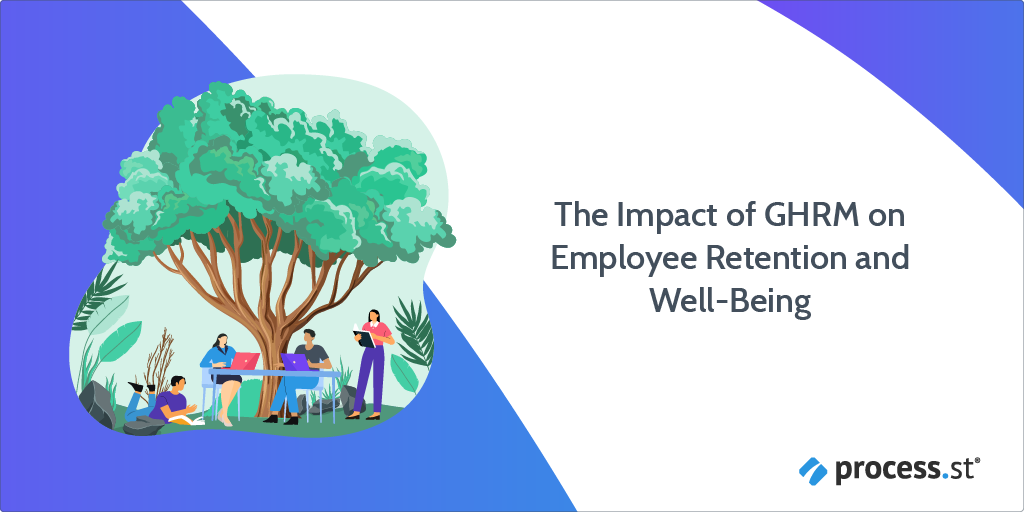
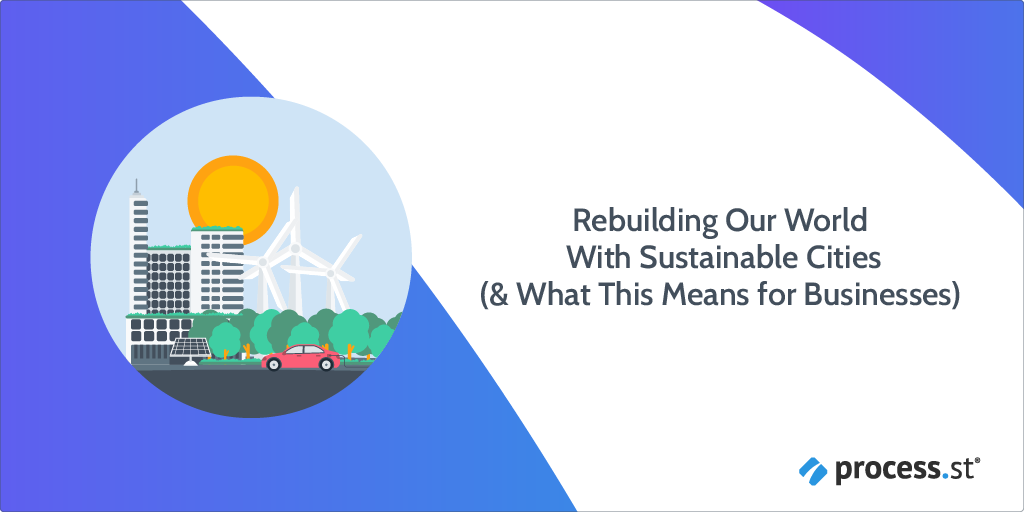
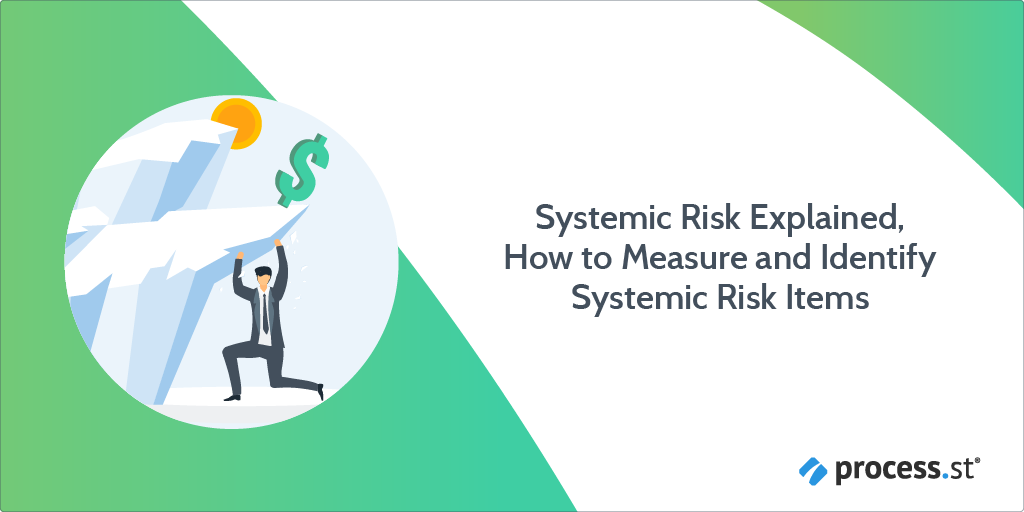
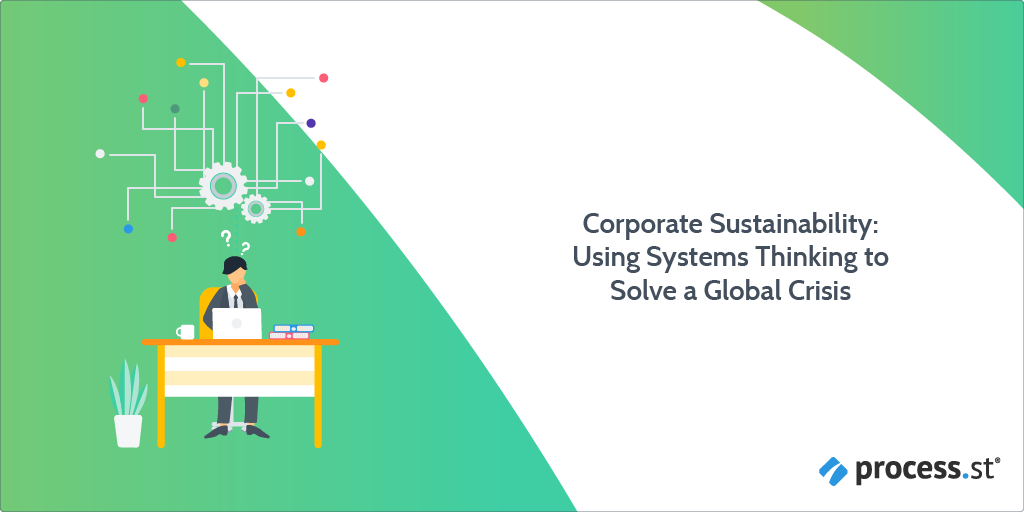
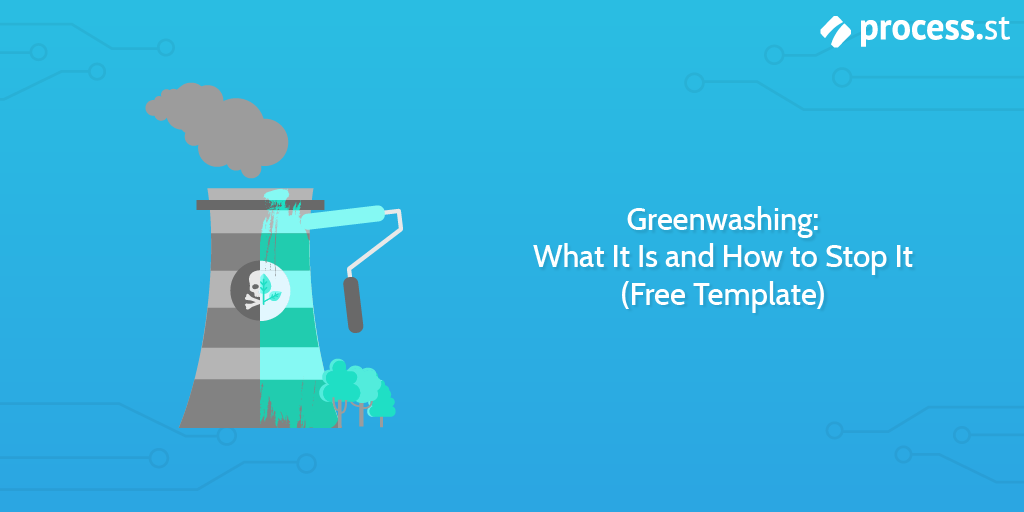 In the words of Jean Rostand, a French Biologist, and Philosopher:
In the words of Jean Rostand, a French Biologist, and Philosopher: